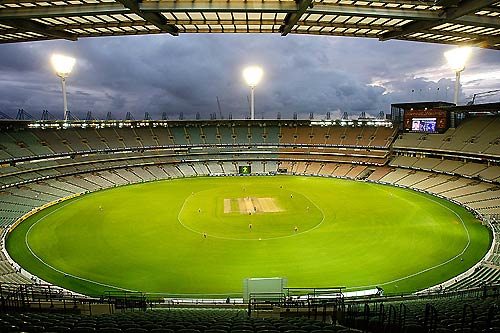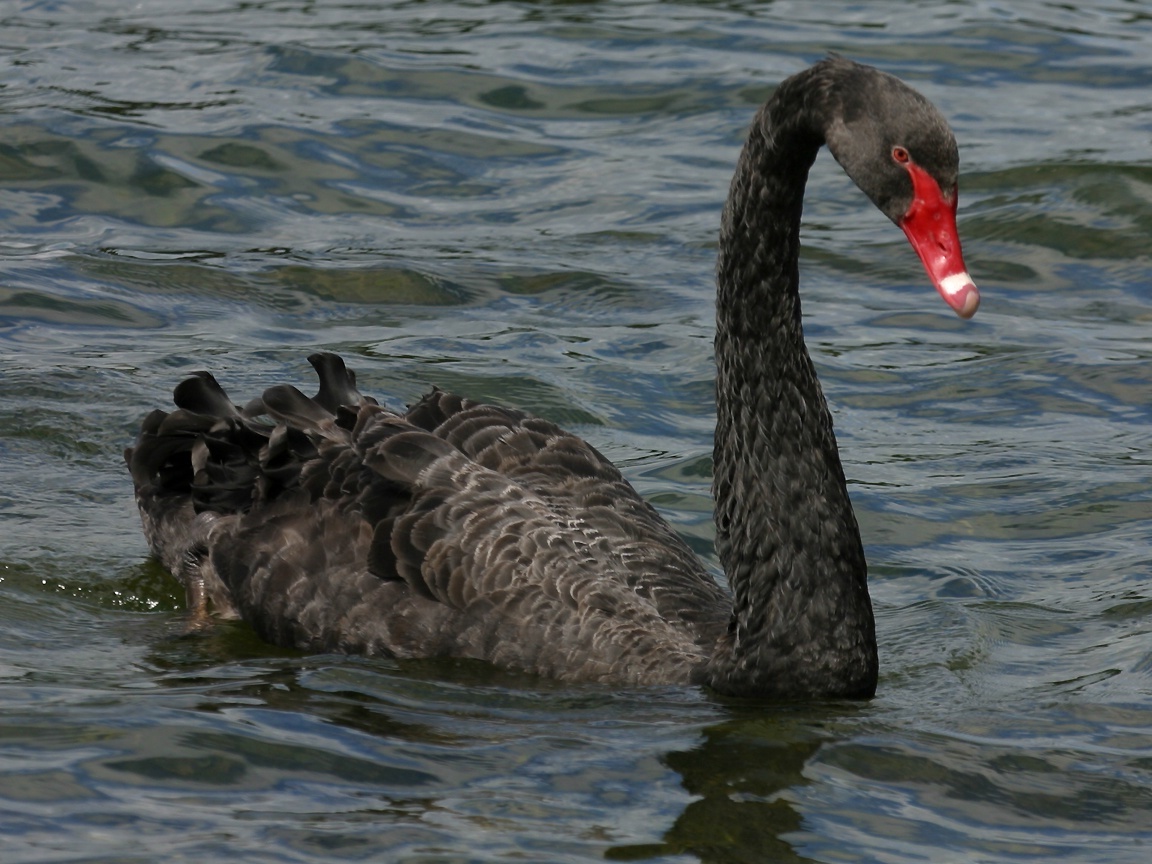| Luton Airport London, Departure Terminal |
| Luton Airport London Departure Terminal |
| Luton Airport London, Departure Terminal |
|
|
|---|
| Luton Airport London, Departure Terminal |
| Luton Airport London Departure Terminal |
| Luton Airport London, Departure Terminal |

|
|
|---|
 Cricket World Cup 2011 Logo
Cricket World Cup 2011 Logo Cricket World Cup 2011 Grounds
Cricket World Cup 2011 Grounds Cricket World Cup 2011
Cricket World Cup 2011 Cricket World Cup 2011 Grounds
Cricket World Cup 2011 Grounds Cricket World Cup 2011 Grounds
Cricket World Cup 2011 Grounds Cricket World Cup 2011 Grounds
Cricket World Cup 2011 Grounds Cricket World Cup 2011 Grounds Mumbai
Cricket World Cup 2011 Grounds Mumbai Cricket World Cup 2011 Grounds
Cricket World Cup 2011 Grounds Cricket World Cup 2011 Grounds
Cricket World Cup 2011 Grounds Cricket World Cup 2011 Grounds
Cricket World Cup 2011 Grounds

|
|
|---|

|
|
|---|

|
|
|---|
The Black Swan Theory or Theory of Black Swan Events is a metaphor that encapsulates the concept that The event is a surprise (to the observer) and has a major impact. After the fact, the event is rationalized by hindsight.
The theory was developed by Nassim Nicholas Taleb to explain:
1. The disproportionate role of high-impact, hard to predict, and rare events that are beyond the realm of normal expectations in history, science, finance and technology
2. The non-computability of the probability of the consequential rare events using scientific methods (owing to the very nature of small probabilities)
3. The psychological biases that make people individually and collectively blind to uncertainty and unaware of the massive role of the rare event in historical affairs
Unlike the earlier philosophical "black swan problem", the "Black Swan Theory" (capitalized) refers only to unexpected events of large magnitude and consequence and their dominant role in history. Such events, considered extreme outliers, collectively play vastly larger roles than regular occurrences.* 1 Background
* 2 Identifying a black swan event
* 3 Coping with black swan events
* 4 Epistemological approach
* 5 See also
o 5.1 Books by Taleb
* 6 References
* 7 External links
lack Swan Events were characterized by Nassim Nicholas Taleb in his 2007 book (revised and completed in 2010), The Black Swan. Taleb regards almost all major scientific discoveries, historical events, and artistic accomplishments as "black swans"—undirected and unpredicted. He gives the rise of the Internet, the personal computer, World War I, and the September 11 attacks as examples of Black Swan Events.
The term black swan was a Latin expression—its oldest known reference comes from the poet Juvenal's characterization of something being "rara avis in terris nigroque simillima cygno" (6.165).[1] In English, this Latin phrase means "a rare bird in the lands, and very like a black swan." When the phrase was coined, the black swan was presumed not to exist. The importance of the simile lies in its analogy to the fragility of any system of thought. A set of conclusions is potentially undone once any of its fundamental postulates is disproved. In this case, the observation of a single black swan would be the undoing of the phrase's underlying logic, as well as any reasoning that followed from that underlying logic.
Juvenal's phrase was a common expression in 16th century London as a statement of impossibility. The London expression derives from the Old World presumption that all swans must be white because all historical records of swans reported that they had white feathers.[2] In that context, a black swan was impossible or at least nonexistent. After a Dutch expedition led by explorer Willem de Vlamingh on the Swan River in 1697, discovered black swans in Western Australia[3], the term metamorphosed to connote that a perceived impossibility might later be disproven. Taleb notes that in the 19th century John Stuart Mill used the black swan logical fallacy as a new term to identify falsification.
Specifically, Taleb asserts[4] in the New York Times:What we call here a Black Swan (and capitalize it) is an event with the following three attributes. First, it is an outlier, as it lies outside the realm of regular expectations, because nothing in the past can convincingly point to its possibility. Second, it carries an extreme impact. Third, in spite of its outlier status, human nature makes us concoct explanations for its occurrence after the fact, making it explainable and predictable.
I stop and summarize the triplet: rarity, extreme impact, and retrospective (though not prospective) predictability. A small number of Black Swans explains almost everything in our world, from the success of ideas and religions, to the dynamics of historical events, to elements of our own personal lives.The main idea in Taleb's book is to not attempt to predict Black Swan Events, but to build robustness against negative ones that occur and be able to exploit positive ones. Taleb contends that banks and trading firms are very vulnerable to hazardous Black Swan Events and are exposed to losses beyond that predicted by their defective models.Based on the author's criteria:
1. The event is a surprise (to the observer).
2. The event has a major impact.
3. After its first recording, the event is rationalized by hindsight, as if it could have been expected (e.g., the relevant data were available but not accounted for).
In the second edition of The Black Swan, Taleb provides "Ten Principles for a Black-Swan-Robust Society".
Taleb states that a Black Swan Event depends on the observer. For example, what may be a Black Swan surprise for a turkey is not a Black Swan surprise to its butcher; hence the objective should be to "avoid being the turkey" by identifying areas of vulnerability in order to "turn the Black Swans white".
Taleb's black swan is different from the earlier philosophical versions of the problem, specifically in epistemology, as it concerns a phenomenon with specific empirical and statistical properties which he calls, "the fourth quadrant".[5]
Taleb's problem is about epistemic limitations in some parts of the areas covered in decision making. These limitations are twofold: philosophical (mathematical) and empirical (human known epistemic biases). The philosophical problem is about the decrease in knowledge when it comes to rare events as these are not visible in past samples and therefore require a strong a priori, or what one can call an extrapolating theory; accordingly events depend more and more on theories when their probability is small. In the fourth quadrant, knowledge is both uncertain and consequences are large, requiring more robustness.
Before Taleb,[6] those who dealt with the notion of the improbable, such as Hume, Mill, and Popper focused on the problem of induction in logic, specifically, that of drawing general conclusions from specific observations. Taleb's Black Swan Event has a central and unique attribute, high impact. His claim is that almost all consequential events in history come from the unexpected—yet humans later convince themselves that these events are explainable in hindsight (bias).
One problem, labeled the ludic fallacy by Taleb, is the belief that the unstructured randomness found in life resembles the structured randomness found in games. This stems from the assumption that the unexpected may be predicted by extrapolating from variations in statistics based on past observations, especially when these statistics are presumed to represent samples from a bell-shaped curve. These concerns often are highly relevant in financial markets, where major players use value at risk models, which imply normal distributions, although market returns typically have fat tail distributions.More generally, decision theory, based on a fixed universe or a model of possible outcomes, ignores and minimizes the effect of events that are "outside model". For instance, a simple model of daily stock market returns may include extreme moves such as Black Monday (1987), but might not model the breakdown of markets following the September 11 attacks of 2001. A fixed model considers the "known unknowns", but ignores the "unknown unknowns".Taleb notes that other distributions are not usable with precision, but often are more descriptive, such as the fractal, power law, or scalable distributions and that awareness of these might help to temper expectations.
Beyond this, he emphasizes that many events simply are without precedent, undercutting the basis of this type of reasoning altogether.Taleb also argues for the use of counterfactual reasoning when considering risk black swan
black swan black swan
black swan black swan
black swan black swan
black swan black swan
black swan black swan
black swan black swan
black swan black swan
black swan black swan
black swan black swan
black swan black swan
black swan black swan
black swan black swan
black swan
black swan

|
|
|---|

|
|
|---|

|
|
|---|

|
|
|---|

|
|
|---|
 |
| Giant sinkholes called cenotes offer unique places to swim in Mexico's Yucatan peninsula. |
 |
| The water at the Chunkanan cenotes is incredibly blue. |
 |
| Horse-drawn rail carts transport visitors to the cenotes at Chunkanan. |

|
|
|---|

|
|
|---|
Shanghai Airports - A complete guide
Pudong International Airport (PVG)
Pudong airport is the newer and bigger of two airports in Shanghai, and it predominantly handles international flights. Many may tell you that it only handles international flights whiles Hongqiao Airport handles domestic, but the reality is Pudong often handles some domestic flights too.
The best way to check which flights are landing/taking off from where is to check this website: http://www.shanghaiairport.com/en/schedules.jsp. or call 96990.
Pudong Airport was constructed with one terminal, but a second terminal opened on 26th March 2008. For comprehensive information on both terminals see Pudong Airport Airlines and Terminals Information. For a list of the useful downloads contained in this article see the Download Center on the right side.
N.B. New luggage regulations mean that passengers are now only allowed one piece of carry-on luggage. This regulation applies to all airports in China.
Getting to and from the airport
Pudong airport is about 30 kilometers southeast downtown Shanghai – about an hour by car to People's Square. A cab from the city center to Pudong airport should not cost more than 200 yuan, and it's convenient for those with no knowledge of Shanghai and lots of luggage. People driving or taking taxis to the airport are advised to take the A20 and follow the signs.
However there are cheaper forms of public transportation available: Airport Shuttle Bus, and metro/maglev.
Since March 16th, the westward extension of Metro Line No. 2 to Hongqiao airport has been put into official use. Lines heading from Terminal 2 of the airport to Guanglan Road in Pudong District run from 5:35am to 10:50pm, while the opposite direction runs from 5:30am to 10:45pm. Interval between services is about 3.5 minutes in rush hours and 4 to 12 minutes in other times.
Since the metro line arrives at Terminal 2 only, passengers should take free shuttle buses provided by the airport if they want to go to Terminal 1. It should also be noticed that metro checks have gone system-wide to beef up security in the lead-up to the 2010 World Expo, therefore it is suggested that metro riders take the checking time into consideration so as not to be late for the flight.
Airport Shuttle Bus
The airport provides a special shuttle bus service into most popular parts of Shanghai including People's Square, Jing'An Temple, Xujiahui, both railway stations, and Hongqiao Airport. Maximum ticket price is 30 yuan.
There are 8 lines and as well as going into downtown Shanghai there are also long distance coaches (which go to neighbouring provinces and cities such as Suzhou and Hangzhou), Hotel Shuttle Bus (which goes directly to the big hotels downtown), and an 'Airport Circle' bus which traverses the area around the airport.
The buses run from early in the morning to late at night with intervals of around 15 – 30 minutes.
Shuttle Bus Downloads
Enlarged image
Download map
Download timetable
Metro/Maglev
If you want to get to the airport by metro you need to take metro line 2. However it doesn't go all the way to the airport. Instead the metro terminates at Longyang Station in Pudong. To get from there to the airport you have to transfer to the Maglev.
Maglev is short for 'magnetically levitating'. As the name suggests maglev trains levitates above the tracks and is propelled forward by electromagnetic force. The levitation means trains can reach up to 500km/hour and the ride is exceptionally smooth.
Although the technology is impressive it is also correspondingly expensive. Shanghai therefore is proud to own the first, operational maglev link in the world.
Actually as a practical way for travelers to get to the airport the maglev is rather expensive, though comfortable and fast. Single ticket costs 50 yuan and return 80, and that's just economy class. You do however get a 20% discount with a valid same day air ticket. For detailed info on the maglev train schedule and price see Pudong Airport Transport 2. Click this link http://www.smtdc.com/en/jszl1_4.asp for more information.
Longyang Road Station Information
Operation Time 6:45--21:40
First Train Longyang Rd. Station 6:45
Airport Station 7:02
Last Train Longyang Rd. Station 21:40
Airport Station 21:42
Interval 6:45-17:00 15 mins.
17:00-21:40 20 mins.
Max Speed 6:45-8:45 300km/h
9:00-10:45 430km/h
11:00-12:45 300km/h
13:00-16:45 430km/h
17:00-21:40 300km/h
Pudong Airport Station Information
Operation Time 7:02--21:42
First Train 龙阳路站 Longyang Rd. Station 6:45
机场站 Airport Station 7:02
Last Train 龙阳路站 Longyang Rd. Station 21:40
机场站 Airport Station 21:42
Interval 7:02-17:02 15 mins.
17:02-21:42 20 mins.
Max Speed 7:02-8:47 300km/h
9:02-10:47 430km/h
11:02-12:47 300km/h
13:02-16:47 430km/h
17:02-21:42 300km/h
Due to its first-in-the-world status however the maglev has also become something of a tourist attraction in its own right, with many foreigners buying a return ticket just for the thrill of experiencing its high speeds, and getting off at the end to take pictures with the train.
Inside Terminal 1
Move your cursor over the two diagrams below to find out how Terminal 1 is laid out.
Terminal 2
The new building covers 480,000-square-meters and has four floors. The third floor is reserved for international departures, the second floor for domestic departures and the ground floor for luggage claims. The fourth floor provides dining and shopping services, plus hourly-charged hotel rooms and gym facilities. Toilets, baby-care rooms and smoking areas are available on all floors of Terminal 2.
International transit passengers who don't need to claim luggage can go to any of the nine service desks to complete transfer procedures and then move to their departure areas after security checks.
Passengers with Special Needs
There are special services at Terminal 2 which is offered free to those who have special needs. The awkwardly translated 'Kind Help Passage' service is meant to ease the process of checking in and navigating around the airport for the elderly (above 70 years old), pregnant women, the disabled etc. At your request they can help you with tickets, security checks, immigration, customs and boarding procedures. They will even push our luggage trolley for you. They can't however provide wheelchairs.
! If you require a wheelchair you should to ask the airline with which you're flying if they can provide one. To request this service go to the information points on, floor 3 of Terminal 2 illustrated below, or you can call +86 21 9608 1388 to prebook for services within that week.
Download PDF file
Hongqiao International Airport (SHA)
Hongqiao airport is the domestic hub for Shanghai, via which you can fly to most Chinese cities.
Although handling mainly domestic flights, Hongqiao functions as a standby airport for international flights, in case dense fog or other unexpected situations close Pudong airport.
Hongqiao has two terminal buildings. Building B is a special terminal for China Eastern Airlines.
Location
Hongqiao airport is about 10 kilometers west of the downtown. One of the airport's advantages is it is much closer to the city center than Pudong airport.
Transport
More public transport combinations are available to take you to the Hongqiao airport and the fares are lower than for Pudong.
Airport shuttle service
Airport shuttle bus Line 1 facilitates transfers between the city's two airports. The one-way fare is 30 yuan and the buses run every 10 minutes. Click here for detailed information.
Hongqiao Airport sepcial line
From Hongqiao airport to the intersection of Changde Road and Nanjing Road W. (near Jing'an Temple). It's an express line and a one-way trip costs 4 yuan.
At Hongqiao, buses run at intervals of 10 to 30 minutes from 8am until the arrival of the last passenger flight. At the other terminal station, Changde Road, buses run from 6am to 8pm.
Bus
Although Hongqiao airport has fewer airport bus lines than Pudong, more public bus lines are linked to Hongqiao.
No. 806: These buses run from Hongqiao airport to the Lupu Bridge between 6am and 9:30pm at intervals of five to 15 minutes. The line also has a stop at Xujiahui, and the whole trip costs 5 yuan.
No. 807: These buses operate between 6am and 9:30pm from Hongqiao airport to the Zhenguang New Village in Putuo District. Fare is 4 yuan.
No. 925: Most of the route is along Yang'an Road and the buses link Hongqiao airport and People's Square between 6am and 9pm. Fare is 4 yuan.
No. 938: These buses run from Hongqiao airport to Yangjiadu in Pudong at intervals of five to 15 minutes, and the one-way fare is 7 yuan. This service operates from 6am until the arrival of the last passenger flight.
No. 941: Linking Hongqiao airport and Shanghai Railway Station, the line runs from 6:30am to 8:30pm and costs 4 yuan. Interval between services is 10 to 12 minutes.
Taxi
Taxi, of course, is the most convenient public transport, but the traffic jams in rush hours will eat away your patience. A taxi from People's Square to Hongqiao airport will cost about 40 yuan.
Metro
No Metro line connects with Hongqiao airport, but the situation will change soon. The Metro Line No. 2 will be extended west to the airport, and the extension is expected to start operation this year

|
|
|---|

|
|
|---|

|
|
|---|
The crime statistics of world's five most dangerous cities are disheartening and shocking. With such high rates of homicide, robberies and violence these cities deservedly bear the names of 'the places of chaos and death' or 'the murder capitals of the world'. Despite the scary data, some of them still remain wanted tourist destinations, though extreme caution is strongly advised when visiting.
5. Cape Town. South Afica.
 residents
residents Crime has been a major problem in South Africa (both for locals and travelers) for many years now, and the murder and robbery statistics loom large in today's society.
The "good" news is that the number of killings declined by 3.4% to around 18 000 (sic!) between April 2008 and March 2009. Still there are 50 murders a day in South Africa. The latest data shows that there have been 71,500 sexual offenses (10% increase), 18,400 burglaries (27% increase), and 13,900 business robberies (41% increase) reported from April 2008 to March 2009. If it's any consolation, the street robbery declined by 7% to 72,194.
The beautifully located Cape Town is among the most dangerous towns in the country due to its high level of robberies, rapes, kidnappings and murders. The city is about the same size as Caracas and it has a murder rate of 62 per 100,000 inhabitants. According to the police, the homicides usually occur in the poorer districts and suburbs of the town rather than in upscale areas. Due to the poverty (the country has been facing a deep recession) the robberies are common. Therefore, traveling alone and using ATM's at night is not advised.
The homicide rate in New Orleans ranks way above other American cities and towns, and therefore the city has been named the murder capital of the USA. The total number of murders equaled 179 in 2008 in this small city of around 300,000 residents. Nevertheless, there have been 15% fewer killings in 2008 than in 2007 when the police reported 210 murders. Also other crime rates are dropping in the town. Rape went down by 44% and armed robbery 4.85% in 2008 in comparison to 2007.
Still, according to the FBI data there have been 95 homicides per 100,000 residents in 2008. In turn New Orleans Police Department reported 67 murders per 100,000 in 2008. A scary comparison has recently been made by the Time magazine stating that Baghdad in Iraq with its murder rate of about 48 per 100,000 people is now being safer, considering the statistics, than New Orleans.
Violent crime is a serious problem especially in the low-income neighborhoods of the town. Lonely Planet advises travelers to New Orleans to be cautious and avoid walks at night, especially if you are alone.
Another unsafe destination among world's most dangerous cities is Caracas, the capital of Venezuela.
At the end of 2008 the Foreign Policy magazine called the city "the murder capital of the world". According to the official statistics there have been 130 homicides per 100,000 residents in 2008. Only in December 2008 there were at least 510 people killed in the capital, as CNN reported.
The problems of Caracas are not only drug trade and gang battles, but also increasing poverty of the city inhabited by around 4 million people. Murders mainly take place in the capital's poorest areas - between 1970s and 1990s the poverty rate increased by 300% to 65%. Although during the oil boom the economic situation improved, the poverty level remains very high.
Moreover, experts underline that the murder ratio has increased by 67% since President Chavez took control over the country. There is police abuse, no gun control, and no good control over the militias, as various media report.

Also Mexico, one of the world's greatest travel destinations thanks to its fascinating history and stunning natural sites, is, unfortunately, facing a serious problem of robbery, kidnapping, sexual assault and drug-related crimes.
Among worst affected areas in the country is the Chihuahua state and, above all, Ciudad Juárez. The city located across the U.S and Mexican border, home to 1.5 million people, has recently got a very bad reputation due to its shocking rates of violence. Bloody and violent fighting between the drug cartels have spread across the town, posing a serious threat to locals and travelers.

The governments' warnings about traveling to Somalia are unanimous: this African country remains extremely dangerous and there is an enormous risk to anyone's security due to the threat of terrorism, clan-based and ethnic fighting as well as high level of kidnapping and piracy off the coast.
The epicenter of this brutal crimes and cruelty is Mogadishu, Somalia's capital. The city has been devastated by the ongoing civil war. As of 2008, around half of the city's population (0.5 million) have left the war-torn capital, according to the United Nations. Dozens of people are wounded every day in Mogadishu, and frequent bombings kill many of civilians. No one really knows how many people have been killed in the city, but without dispute Mogadishu remains the most lawless and dangerous city in the world. This is how BBC describes the everyday scenes in Mogadishu: "The crump of mortars; the crackle of gunfire; eerily empty streets; prowling guerrillas and looters; sprawling refugee camps; hospitals overflowing with casualties, their bodies smashed open by bullets, shells and shrapnel...".
Since the overthrow of President Siad Barre in 1991 one million people have lost lives in Somalia due to the civil war and famine.
